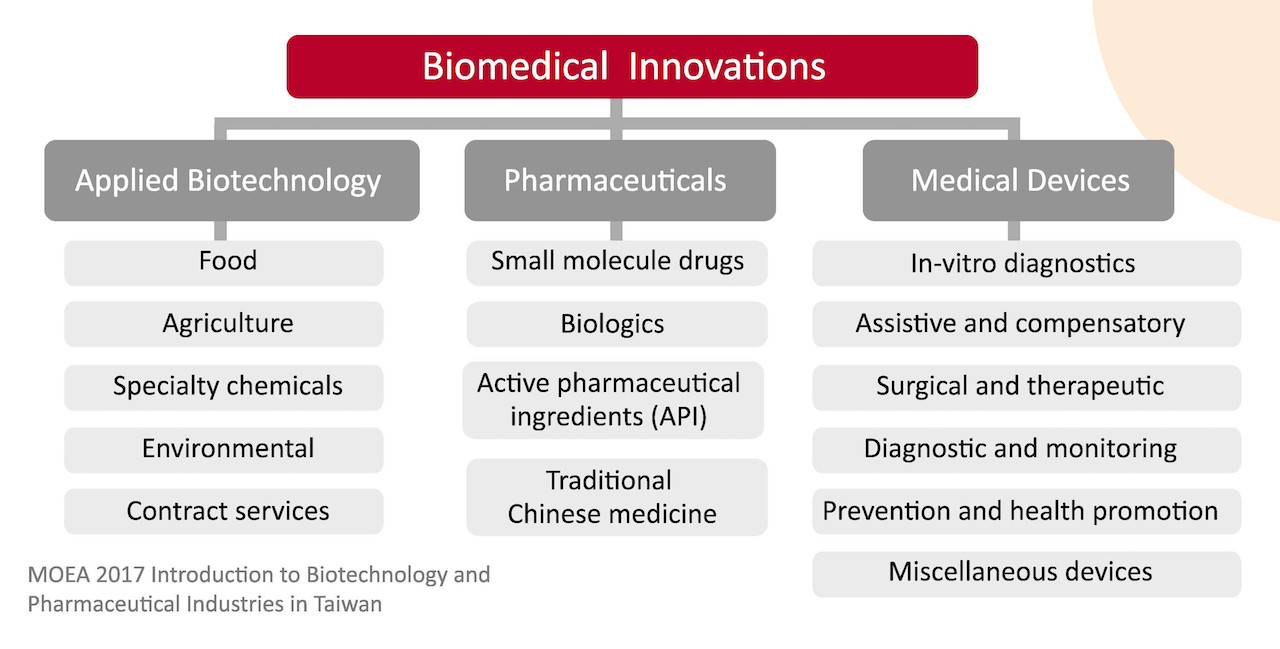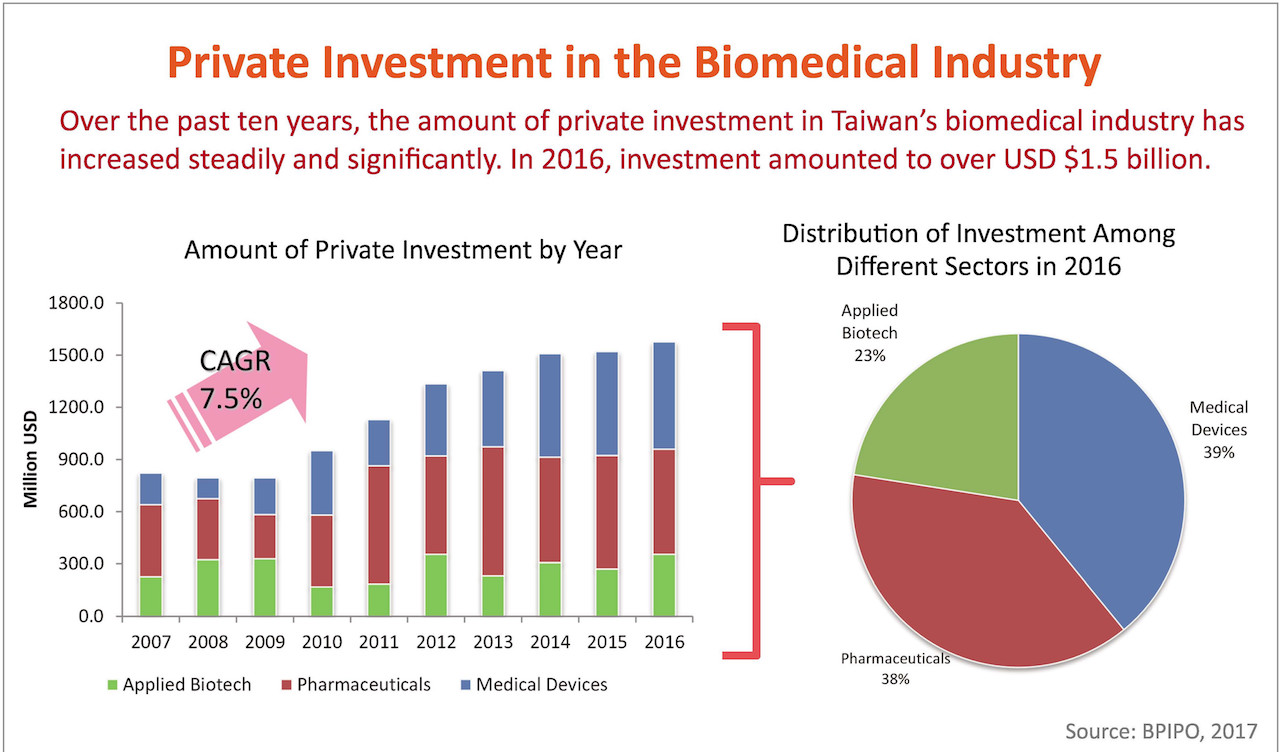Overview of Taiwan's Biomedical Industry
Taiwan is already a world leader in a number of medical devices which have appealed private investment in the industry increasing steadily and significantly in recent years.

The global life sciences industry is projected to reach USD $1.8 trillion by 2019, and Asia will be one of its most important future markets. By 2019, the region is expected to generate more than half of all growth in the number of high-income households worldwide, and by 2025, 310 of the world’s top 600 cities will be in Asia.
Taiwan’s biomedical industry includes three major sectors: applied biotechnology, pharmaceuticals, and medical devices.
The government has been investing in the biotechnology industry since 1984, when it founded the Development Center for Biotechnology (DCB), a non-profit research institute with the mission to develop Taiwan’s biotech industry. Research institutes have played an important role in the development of Taiwan’s economy, and today no less than nine institutes are involved in the development Biomedical Innovations of the country’s biomedical industry.

In addition to DCB, there are also the Industrial Technology Research Institute (ITRI), the Medical and Pharmaceutical Industry Technology and Development Center (PITDC), the Metal Industries Research Development Centre (MIRDC), the National Health Research Institutes (NHRI), the Center for Drug Evaluation (CDE), the Agricultural Technology Research Institute (ATRI), the National Applied Research Laboratories (NARLabs), and Academia Sinica (AS).
Thanks to its background in ICT and manufacturing, Taiwan is already a world leader in a number of medical devices, including digital blood pressure monitors, electric wheelchairs and scooters, and electronic thermometers. In 2016, Taiwan’s electronic/digital blood pressure monitors and electric wheelchairs ranked 2nd in the world, with a market share of 22.9% and 33.5%, respectively.
As momentum continues to build, investors are taking note. Over the past 10 years, private investment in the industry has increased steadily and significantly.